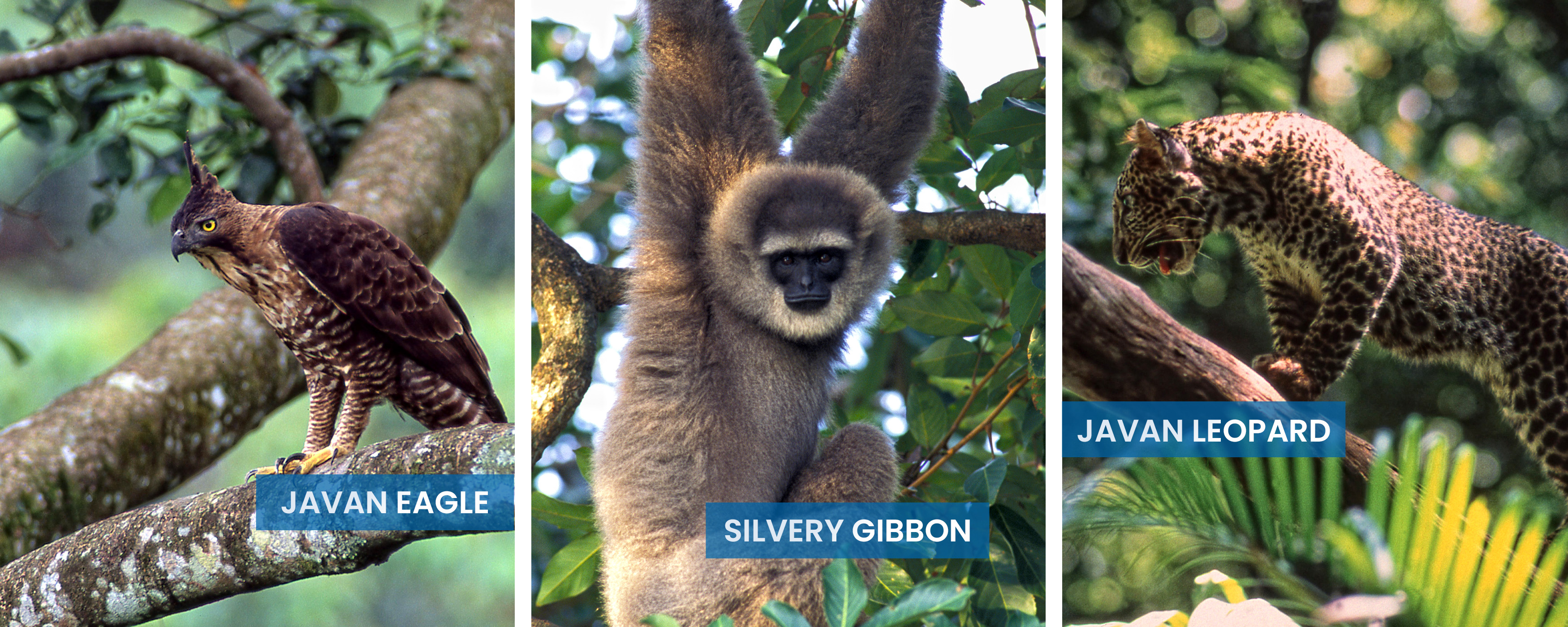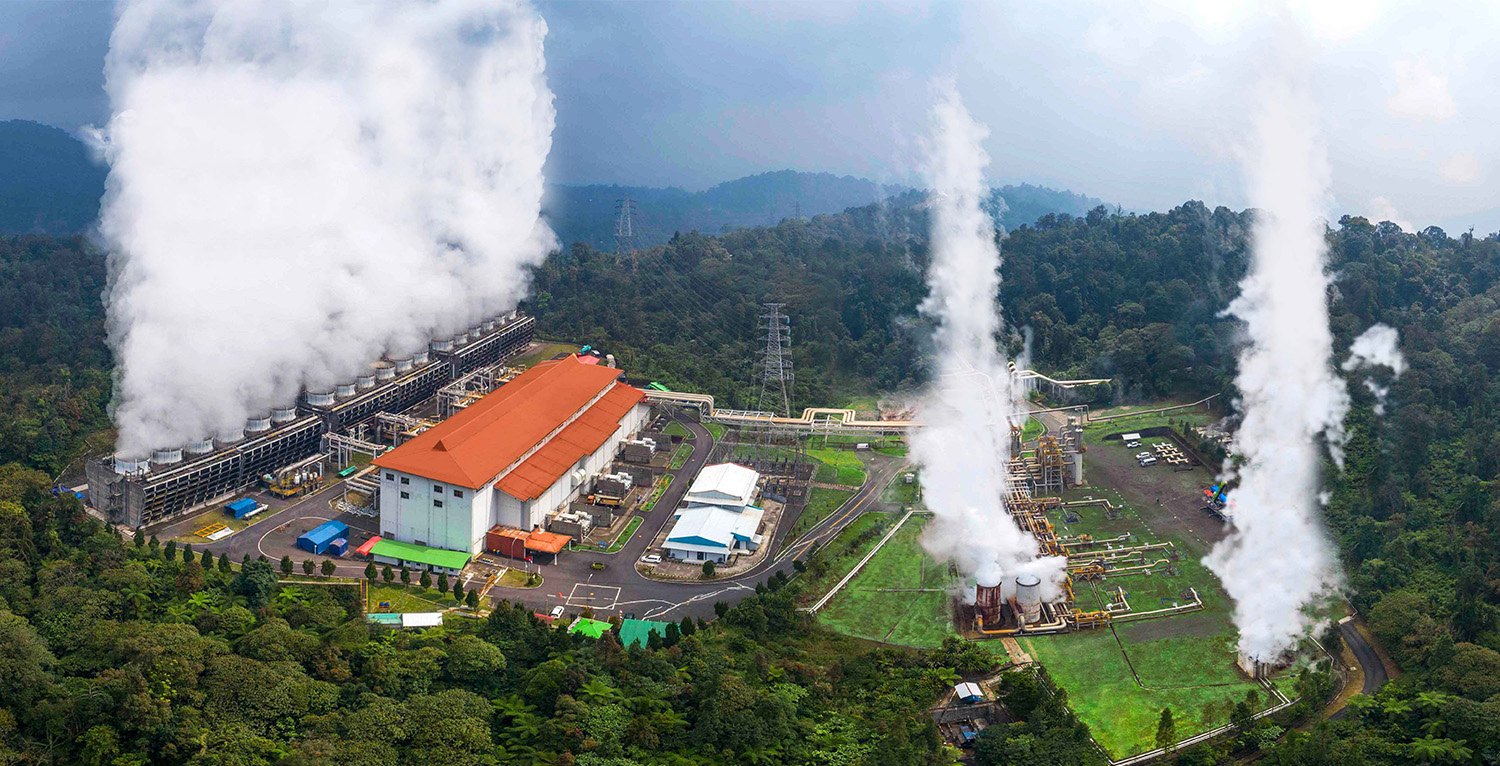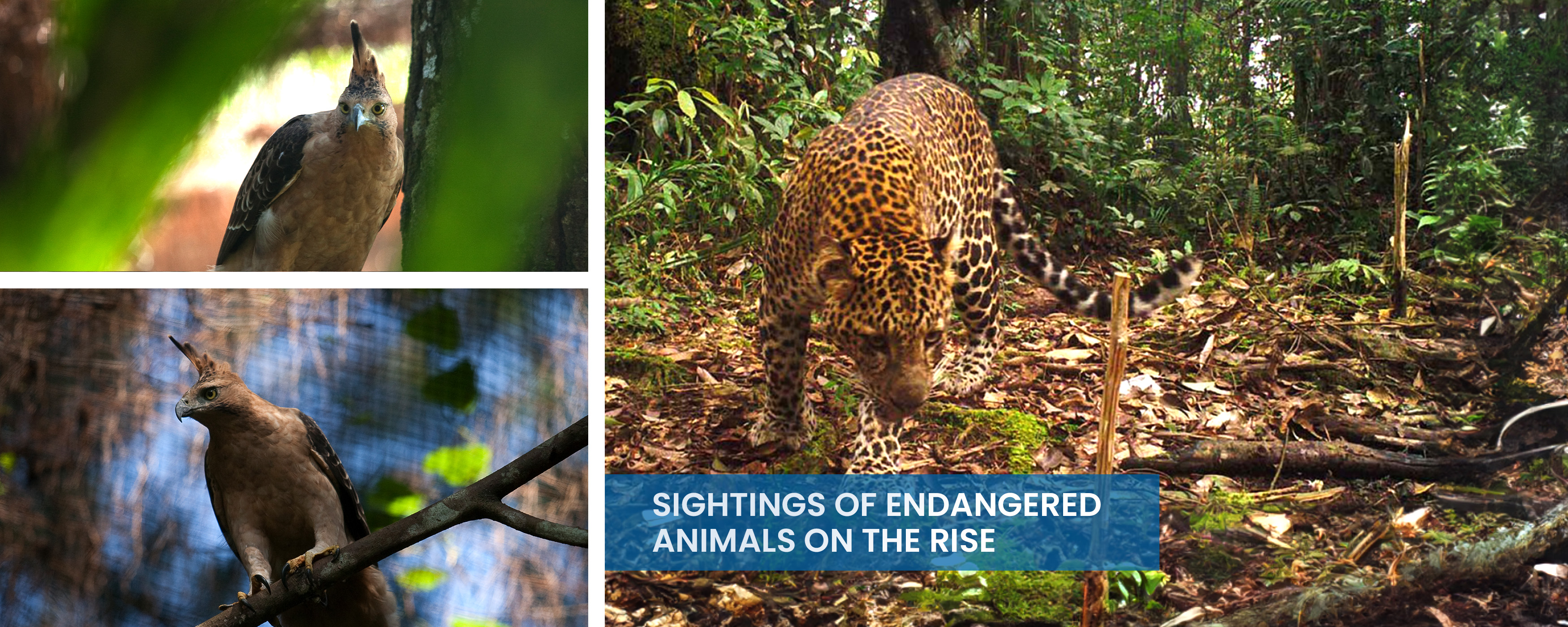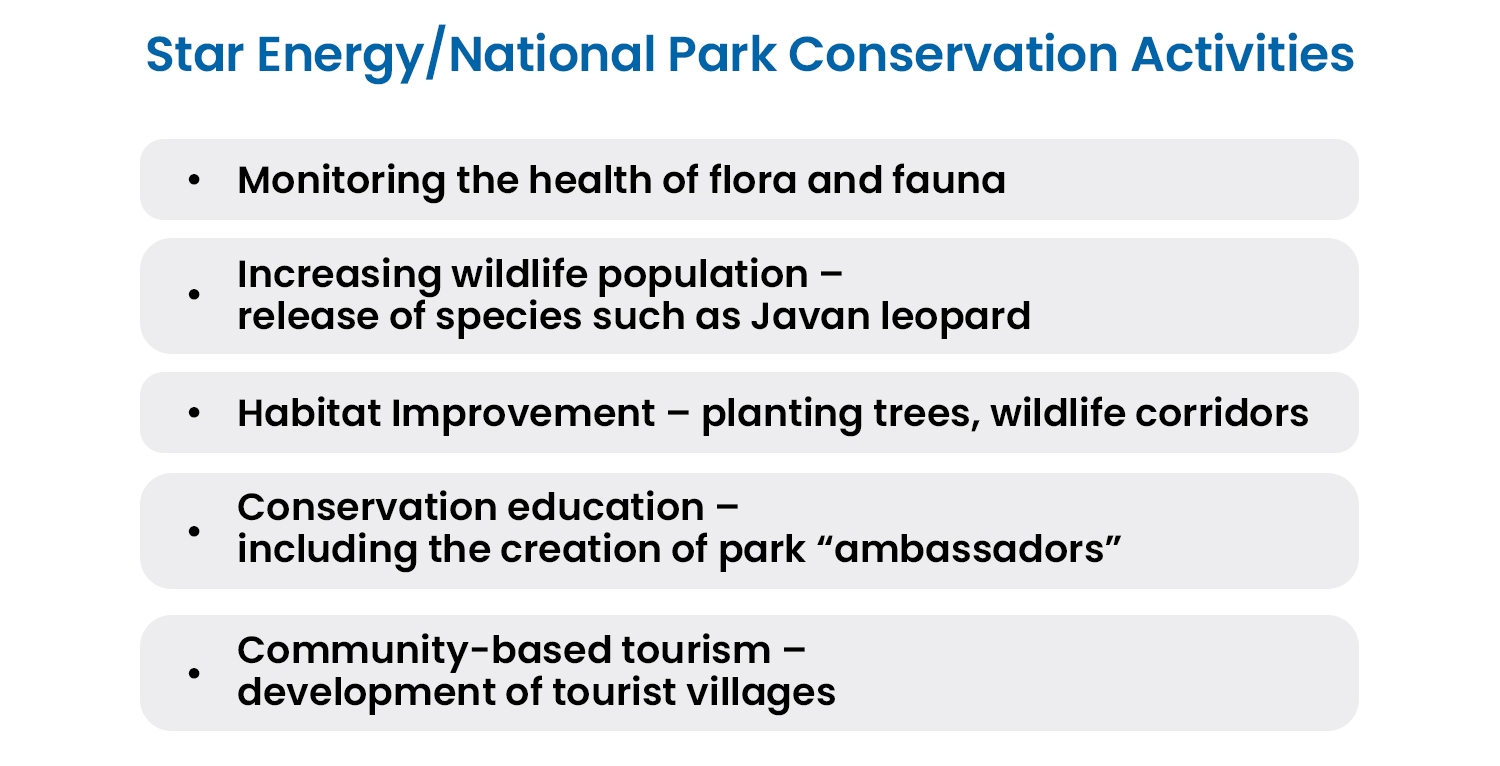Hot Power: A Clean Energy Game Changer for Indonesia?
The verdant rainforests of Indonesia’s West Java province are home to a remarkable species of ape that plays a key role in regenerating forest vegetation by dispersing seeds.
Characterized by its fluffy gray fur and long arms, the silvery gibbon is endemic to this region and spends most of its life high up in the forest canopy.
It is also critically endangered, with fewer than 2,500 thought to be left in the wild.[1]
A big part of the effort to save them is focused on Mount Halimun Salak National Park in West Java, a roughly 400-square-kilometer conservation area dominated by two mist-shrouded volcanoes – Halimun, which literally translates as mist in the local Sundanese language, and Salak.

Set up in 1992, the park is designated mixed-use, so in addition to offering a secure environment for endangered animals like the silvery gibbon, Javan eagle and the Javan leopard, it promotes sustainable agroforestry and ecotourism. The area is also home to the Kasepuhan, an indigenous Sundanese community who depend on the land -- particularly rice cultivation – for survival.
Underground Bounty
However, the story really begins deep below the surface of the park where a vast reservoir of renewable energy sits waiting to be tapped.
The energy is geothermal, and Indonesia is estimated to have the world’s largest potential reserves.[2]
Geothermal energy harnesses heat from the Earth’s core. It is usually found in tectonically active regions – like West Java – where heated water or steam is collected in underground reservoirs. Wells are used to drill into these reservoirs – sometimes several miles deep – to bring the steam or water to the surface where it can be converted to electricity or used for heating and cooling.
And with less than 5% of Indonesia’s geothermal capacity exploited,[3] this is a resource with the potential to accelerate the country’s move away from fossil fuels such as coal and increase its energy security.
Clean and Inexhaustible
But can this clean-energy bounty be extracted efficiently without disrupting the delicate ecological balance in areas like Mount Halimun Salak National Park?

Geothermal energy is inherently clean, inexhaustible, and the extraction process has a limited land footprint. However, the industry’s growth has been impacted by negative comparisons with other mining activities, regulatory barriers to geothermal development on public land,[4] and concerns about the high costs of drilling.
Unlike coal power, which uses open-pit mining and has a significant environmental impact on the surface, geothermal energy extraction operates as a closed-loop system. This involves drilling wells into the Earth and pumping water through them to extract the natural heat from the ground. The heated liquid is then returned below ground – thus completing the loop. Not only does this generate 99% less carbon dioxide than fossil fuel power plants,[5] it minimizes any disruption at the surface.
"Every energy project inevitably has consequences,” said Professor Dr. Ir. Lilik Budi Prasetyo of the Department of Forest Resources Conservation and Ecotourism at Bogor Agricultural University in Indonesia.“
But comparing geothermal to mining reveals a stark difference. Mining is extensive, whereas geothermal development is generally localized, involving smaller-scale road construction and drilling sites. While there are undoubtedly some impacts, I believe they are relatively minimal and can be mitigated compared with oil or coal exploitation.”

The industry hopes to drive down the costs of geothermal energy through economies of scale, cheaper and more robust drilling technologies, and better exploration techniques. For instance, the EarthShots Initiative in the United States aims to cut the cost of next-generation geothermal power by 90% to $45/megawatt (MWh) by 2035.[6] EarthShots was set up by the Department of Energy to accelerate developments in net-zero carbon technologies in the US and around the world.
Minimizing Impact, Maximizing Benefits
In 1994, Salak Geothermal Plant was commissioned after a series of environmental impact assessments in the area. As a result, the plant developers – Unocal Geothermal of Indonesia (UGI) and Pertamina – pledged to minimize land clearance for surface facilities, reforest an area twice the size of that used for geothermal operations, and regularly monitor emissions levels.
Local community projects were also developed using three criteria: to directly improve public health, education and the local environment; encourage self-help and community participation; and to create positive awareness of geothermal energy and its contribution to the local economy.[7]
This has allowed both the plant and park to flourish.
“Geothermal power is a scalable alternative to coal, with significantly smaller greenhouse gas emissions, making it environmentally friendly and contributing to climate change mitigation,”
— Hendra Tan, Chief Executive Officer, Star Energy Geothermal
Salak, which is operated by Star Energy Geothermal, the renewable energy arm of Barito Renewables – which recently became the second geothermal producer to list in Indonesia[8] -- and Barito Pacific Group, has an installed capacity of 886 megawatts (MW), and supplies clean energy to approximately two million households across Java.
While the national park has benefited from a number of key conservation projects, such as the Green Corridor Initiative – which involves the restoration of a “wildlife corridor” that connects the Mount Halimun and Mount Salak tropical forests – and “Eye on the Forest,” which involves placing hidden camera traps to monitor protected species and overall biodiversity.
“Our collaboration with Star Energy Geothermal is aimed at preserving the ecosystem and flora and fauna,” said Irzal Azhar, Head of Balai (Unit), Mount Halimun Salak National Park.
And that work is paying off.

Sightings of the silvery gibbon have increased from six in 2018 to 14 in 2022. Sightings of the Javanese leopard rose from eight to 15 for the same period, while the Javanese hawk eagle was spotted 16 times in 2022, compared with nine sightings in 2018.[9]
“Star Energy Geothermal’s collaboration with the national park started in 2017,” said Azhar. “Since then, we’ve seen some significant benefits in terms of increased forest and wildlife protection, as well as projects focused on habitat improvement and monitoring the surrounding flora and fauna.”
This year, a Javanese leopard was released into the wild around the Star Energy Geothermal plant area in a coordinated plan with the National Park. Named Wahyu, it was rehabilitated at a rescue center after being found malnourished and dehydrated.[10]


Meanwhile, community development programs have focused on driving a behavioral shift in the local population, turning them into forest protectors rather than encroachers. This has involved income-generating activities such as tree planting and eco-tourism, as well as the creation of an education center to teach people about biodiversity conservation.
“While it may not be flawless, geothermal operations avoid the fragmentation, isolation, and habitat destruction seen in mining," said Bogor Agricultural University’s Professor Lilik.
Model for a Clean Energy Future
The success of Salak is a major factor behind the Indonesian government’s desire to scale its geothermal sector – part of a broader strategy by President Joko Widodo to obtain almost a quarter of its energy from renewable sources by 2025.[11]
According to the General Plan for National Energy (RUEN), Indonesia plans to generate more than 7GWh of geothermal power by 2025 – which would require $15 billion in investment – and more than 9GWh by 2035.[12]

“Geothermal power is a scalable alternative to coal, with significantly smaller greenhouse gas emissions, making it environmentally friendly and contributing to climate change mitigation,” said Hendra Tan, Chief Executive Officer, Star Energy Geothermal.
“It also has many advantages over other renewable energy sources. First, it is reliable; it can operate at 95-99% year-round. Second, it is not dependent on the weather. And third, geothermal plants are compact so have a minimal impact on the surrounding environment.”
Developed and managed properly, geothermal energy could be transformative for the world’s fourth-most-populous nation and its net-zero ambitions – as well as its colony of silvery gibbons in West Java.
